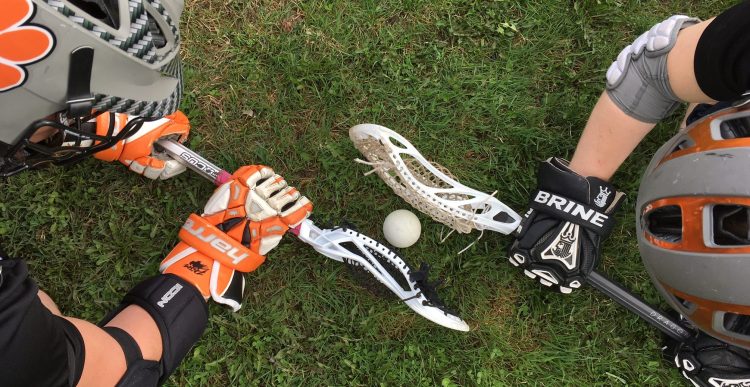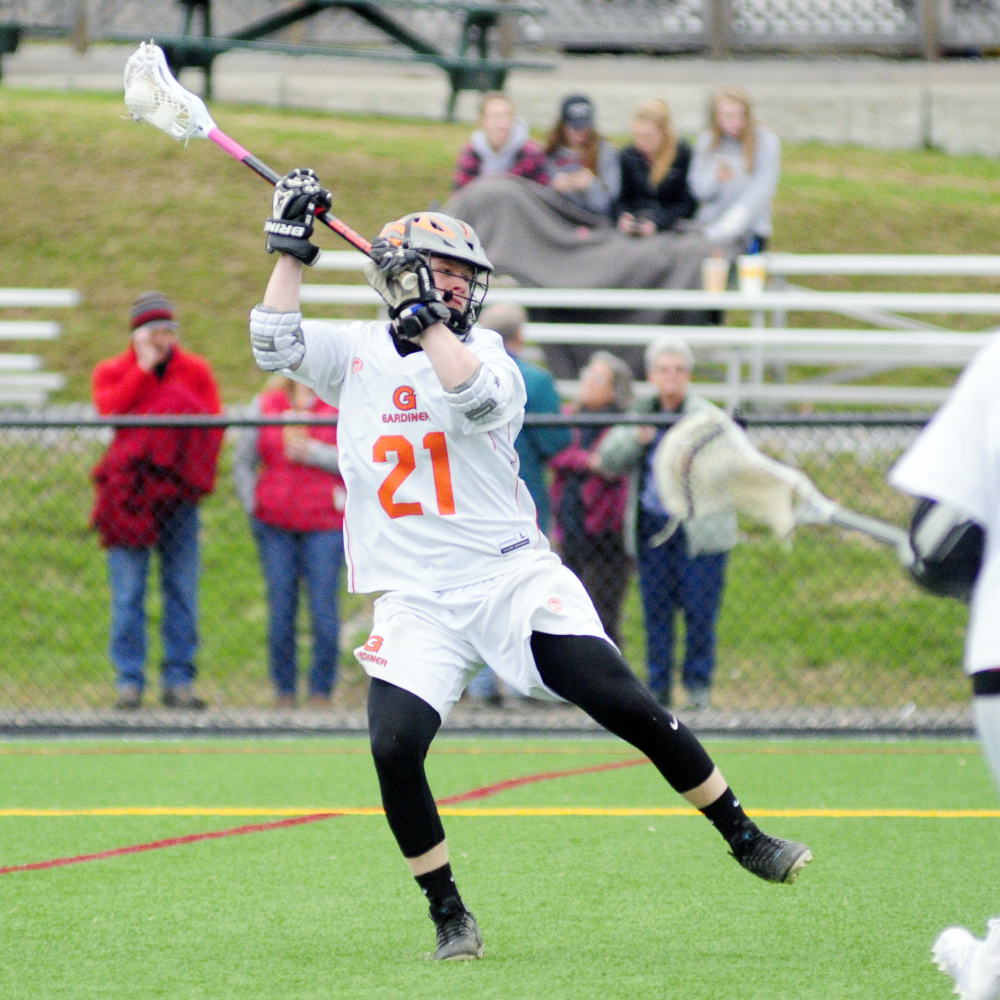Down a pair of goals with less than a minute remaining against Massabesic last month, Gardiner Area High School captain Sloan Berthiaume makes his move the to the net, fires and scores. He races to the goal, grabs the ball and sprints it all the way back to midfield.
Just eight seconds remain on the clock, which is running, marking down the seconds in an otherwise unremarkable preseason scrimmage.
Berthiaume looks up at the referee. “One more faceoff?” The referee shrugs his shoulders as if to say, “Why not?”
The whistle blows, Berthiaume wins the draw and races downfield, producing another move to the net, another shot, and another goal.
A game the Tigers otherwise thought would be chalked up to a “learning experience,” “team growth” or any of the other dozens of buzzwords high school coaches like to toss around in the face of defeat, instead becomes another prime example of one inalienable truth of lacrosse.
Faceoffs are supremely important.
“When you have good, quick kids that can consistently win the ball, win you possessions, you can slow the game down or the push the pace to whatever your team’s tendencies are,” Gardiner head coach K.C. Johnson said.
Johnson should know. His 5-0 Tigers, sitting atop Class B North, have one of the best faceoff men in the area in Berthiaume. Along with Garrett Hinkley, Gardiner’s ability to win faceoffs has been a big reason the team has hit double digits in every game and averages 11 goals per contest.
In a sport that is a closer cousin to basketball than many people realize, gaining as many possessions as possible and maximizing offensive output with those extra possessions are paramount to a team’s success. In that way, faceoffs rival ground balls as key stats beyond goals scored and shot totals.
“For Sloan, it’s been self-taught a little bit,” said Johnson, who admits he doesn’t spend as much practice time on the art of the faceoff as he’d like. “He’s an old-school faceoff guy. He really is very instinctive, he is quick on the trigger, he goes to the goal right away. He’s very smart and saavy.”
Berthiaume is able to go to the goal so quickly, in part, because he wins far more faceoffs than he loses. In a recent game against rival Cony High School, Berthiaume scored twice in the second quarter after winning consecutive faceoffs and turning them almost immediately into goals, turning a 2-1 deficit into a first-half lead.
“It’s more reacting to how your opponent is and how he plays and goes on it,” said Berthiaume, who admitted that the first couple of faceoffs of a game are essentially a feeling out process. “What you see from him, you’ll adapt.”
At its core, the predominant faceoff strategy is to simply clamp down on the ball while trying to get leverage on the opponents’ stick to try and draw the ball free.
There are adjustments — and adaptations — to be made from individual to individual, and that’s where coaching the art of the faceoff can get tricky. Johnson and Erskine Academy first-year coach Jason Wade both admit that they don’t spend much practice time, if any, on faceoffs.
Given how important they are to the flow of a game, it seems counterintuitive, but Wade makes the comparison to the goaltender position in hockey.
“To me, it lines up with goalies,” said Wade, whose background is in coaching youth lacrosse players in the Central Maine Youth Lacrosse program. “There are so many nuances to that position, unless you’re specifially a goalie coach, (that) it is hard to know all of those and coach that. There’s a lot of nuances to the faceoff game. The real magicians at the faceoff ‘X’ are really skilled at those nuances. If I was coaching at a really high level, it would be hard for me to feel like I knew how to teach all of those.”
A number of area players get coaching on the side, via clinics specific to the ability to take faceoffs, much like softball pitchers have personal throwing coaches or basketball players participate in shooting clinics. While it’s obvious that those skills are necessary to the particular sports, it doesn’t mean that everyone excels at them.
Berthiaume and Hinkley have learned how to do it mostly on their own. It’s a blend of speedy hands, technique and — Berthiaume says — the willingness to take some of the pain that comes with flailing sticks in the hands of players charging in from the wings trying to gain possession of the ball themselves.
“At the youth level, you try to find a kid with quick hands. That’s the biggest thing,” Wade said. “If you have an athletic kid with some interest in it, you can build off of that.”
Berthiaume started working on his faceoff game when he was in fourth grade. Hinkley, Johnson said, comes naturally by it.
“It’s just about trying to get down fast,” said Hinkley, who, at well over six feet tall, owns a distinct size and strength advantage over many faceoff-minded midfielders. “If I win it, it makes me feel good and I want to play harder.”
When players begin to open up about the actual techniques involved in taking faceoffs, they talk about the clamp, about rotation and body positioning and about countering what it is that the opponent himself is trying to accomplish.
Faceoffs are the proverbial game within the game — an ongoing chess match between two individuals or a poker game where opponents try not to reveal too much too soon.
“It’s a lot about your know-how in what to do and how to react in certain situations,” Berthiaume said. “They’re never going to be the same.”
Nobody disputes that, no matter how individuals approach the process, success at the ‘X’ can influence the outcome of a contest.
“It can win games for you,” Berthiaume said. “You might be playing against a better team, but if you can gain possession off of faceoffs, it can win the game for you.”
Travis Barrett — 621-5621
tbarrett@centralmaine.com
Twitter: @TBarrettGWC
Send questions/comments to the editors.





Comments are no longer available on this story